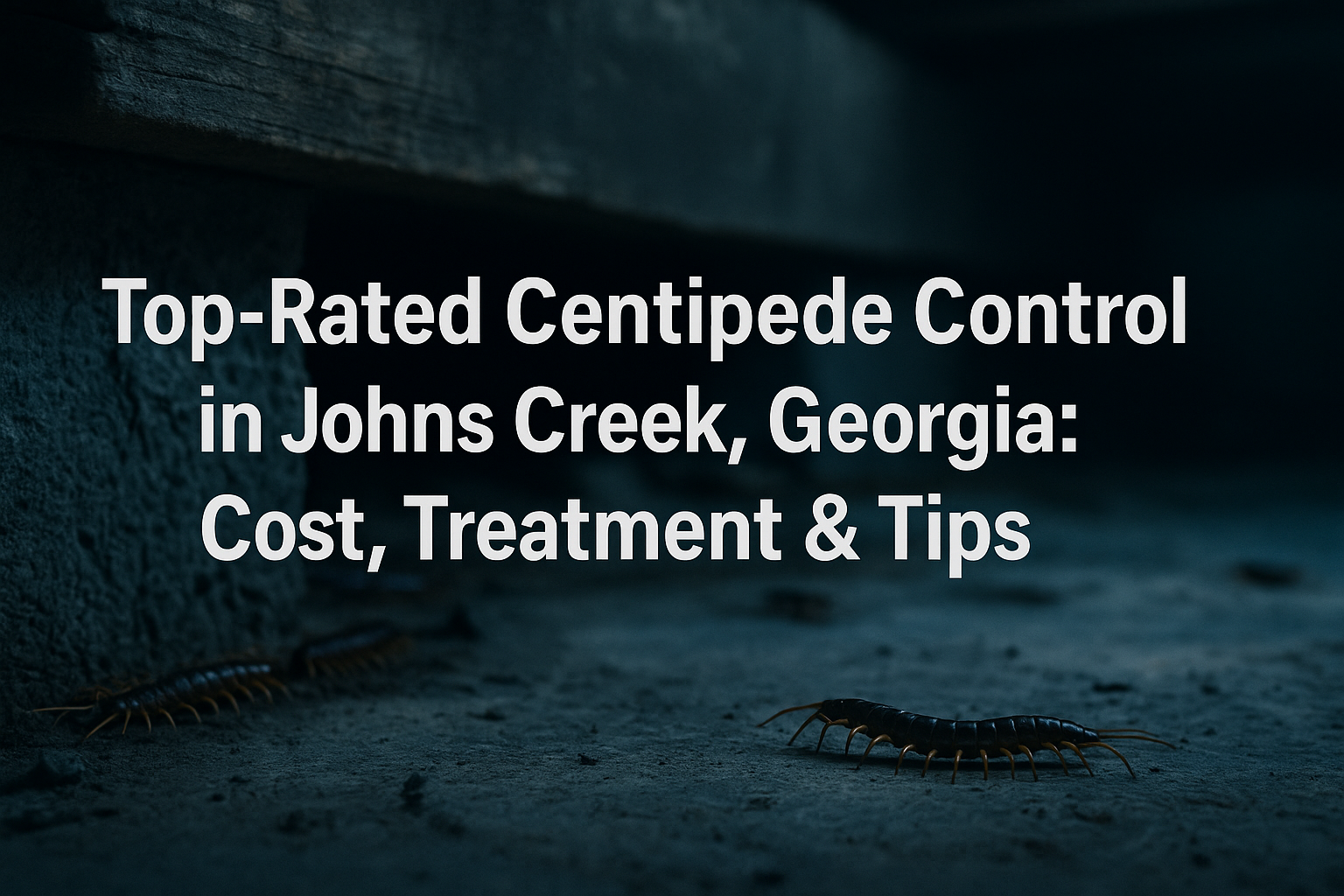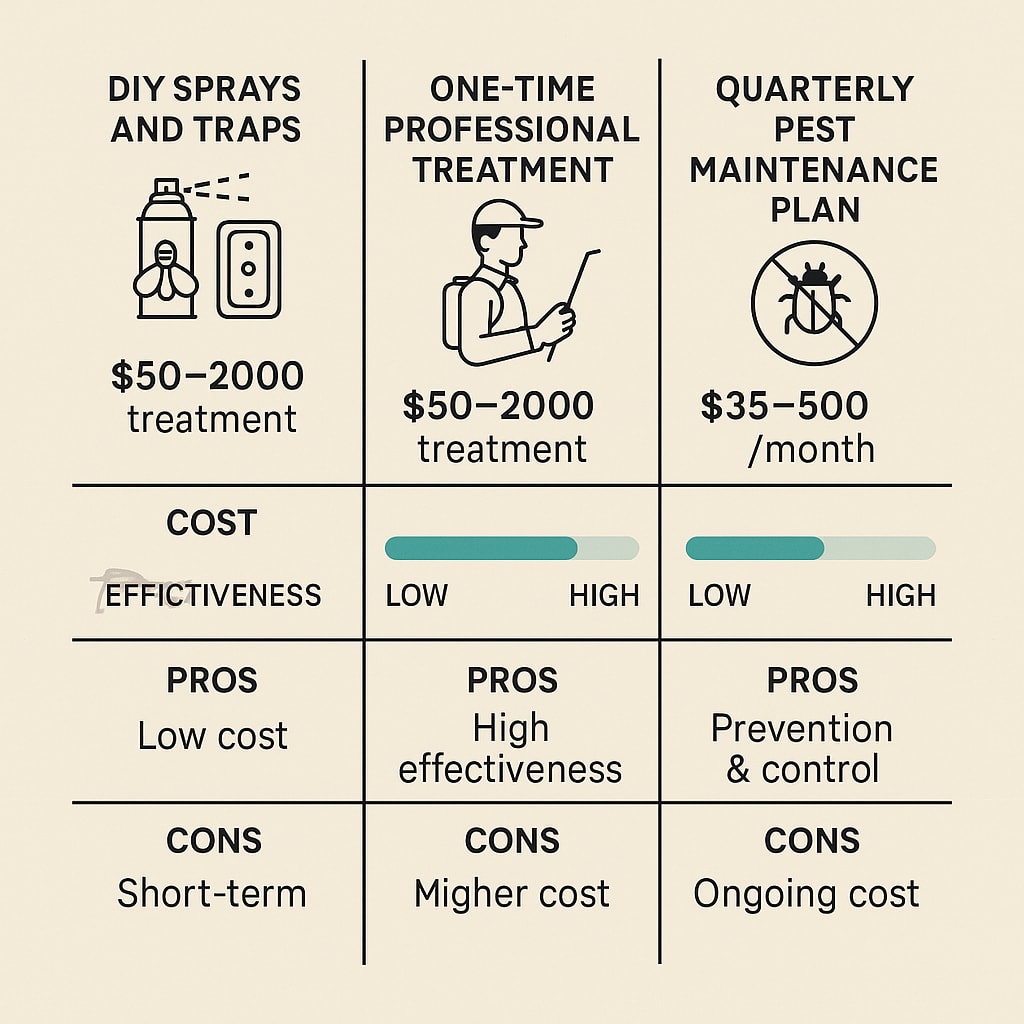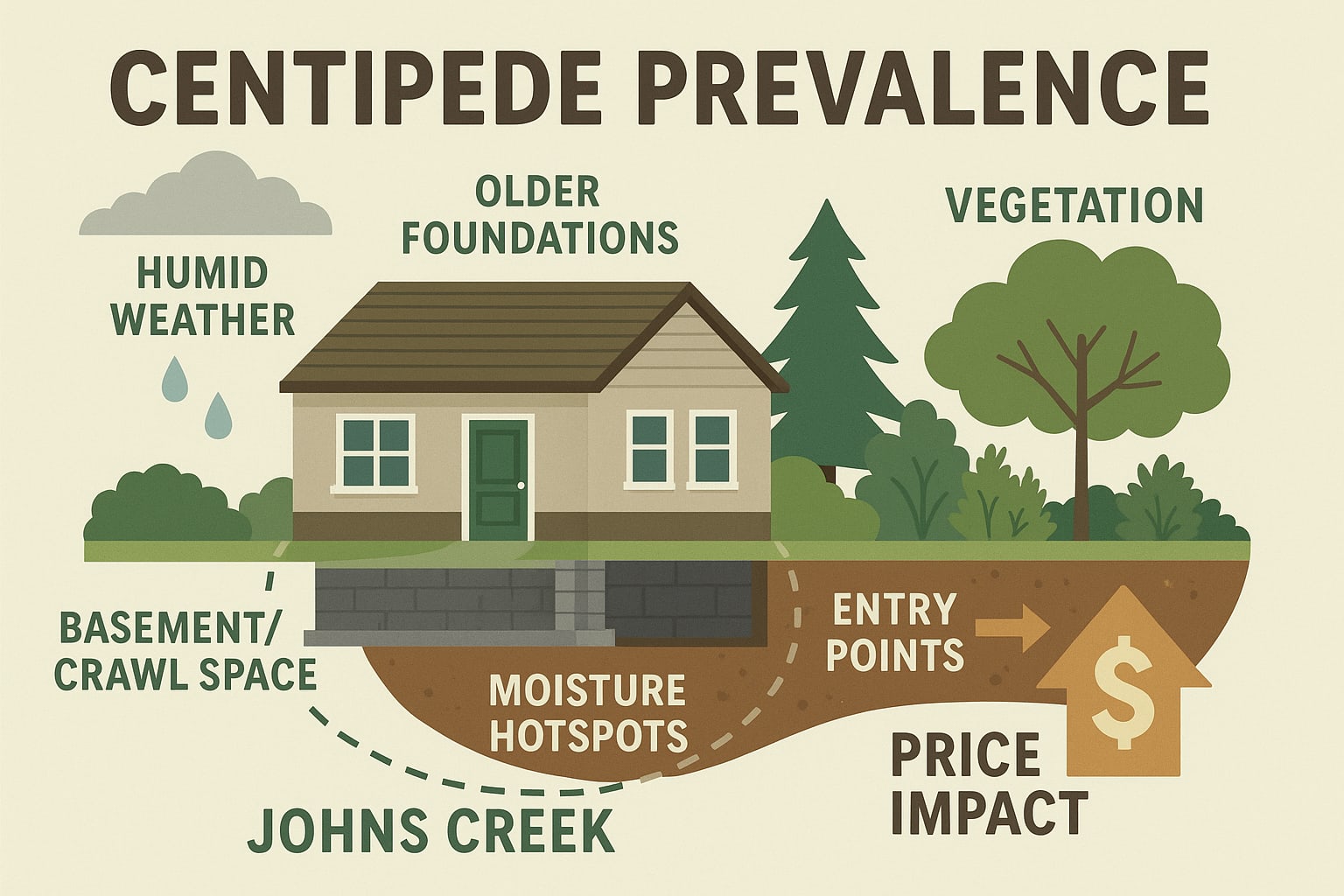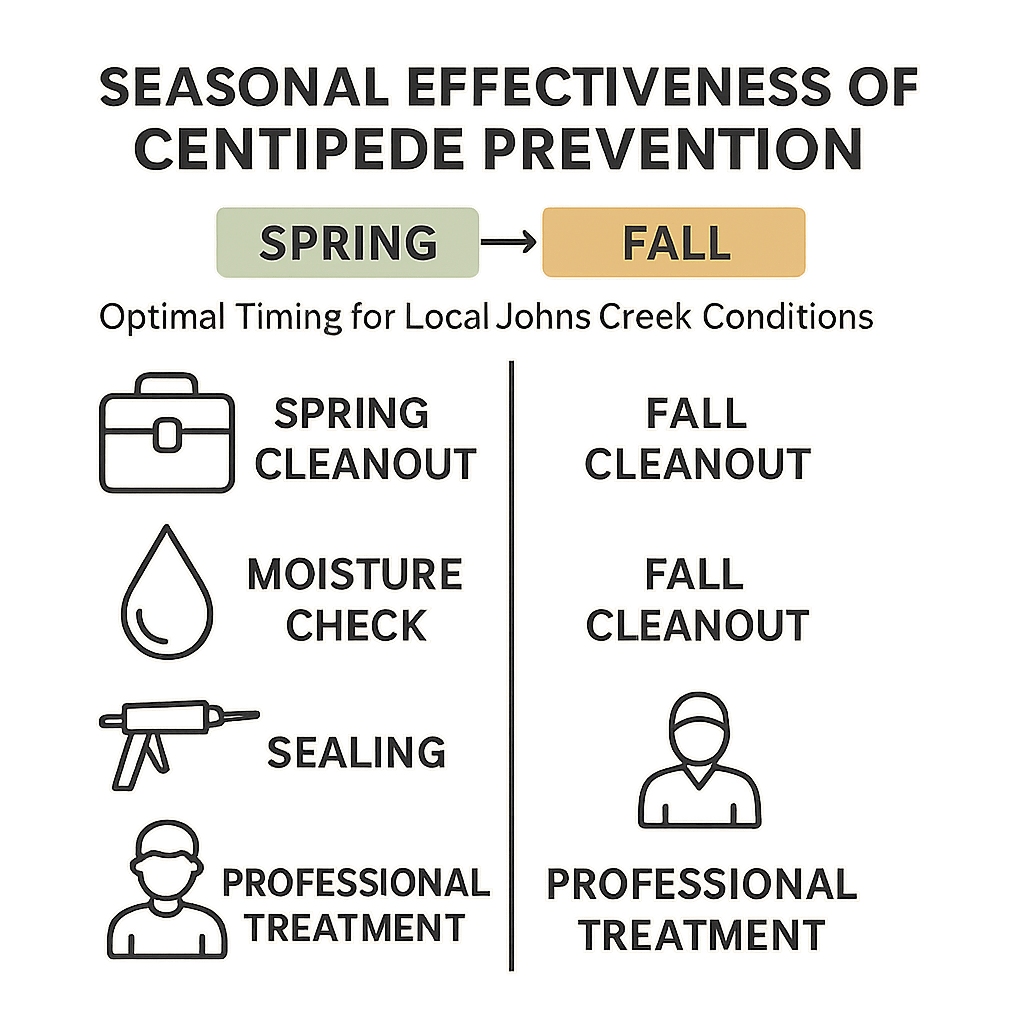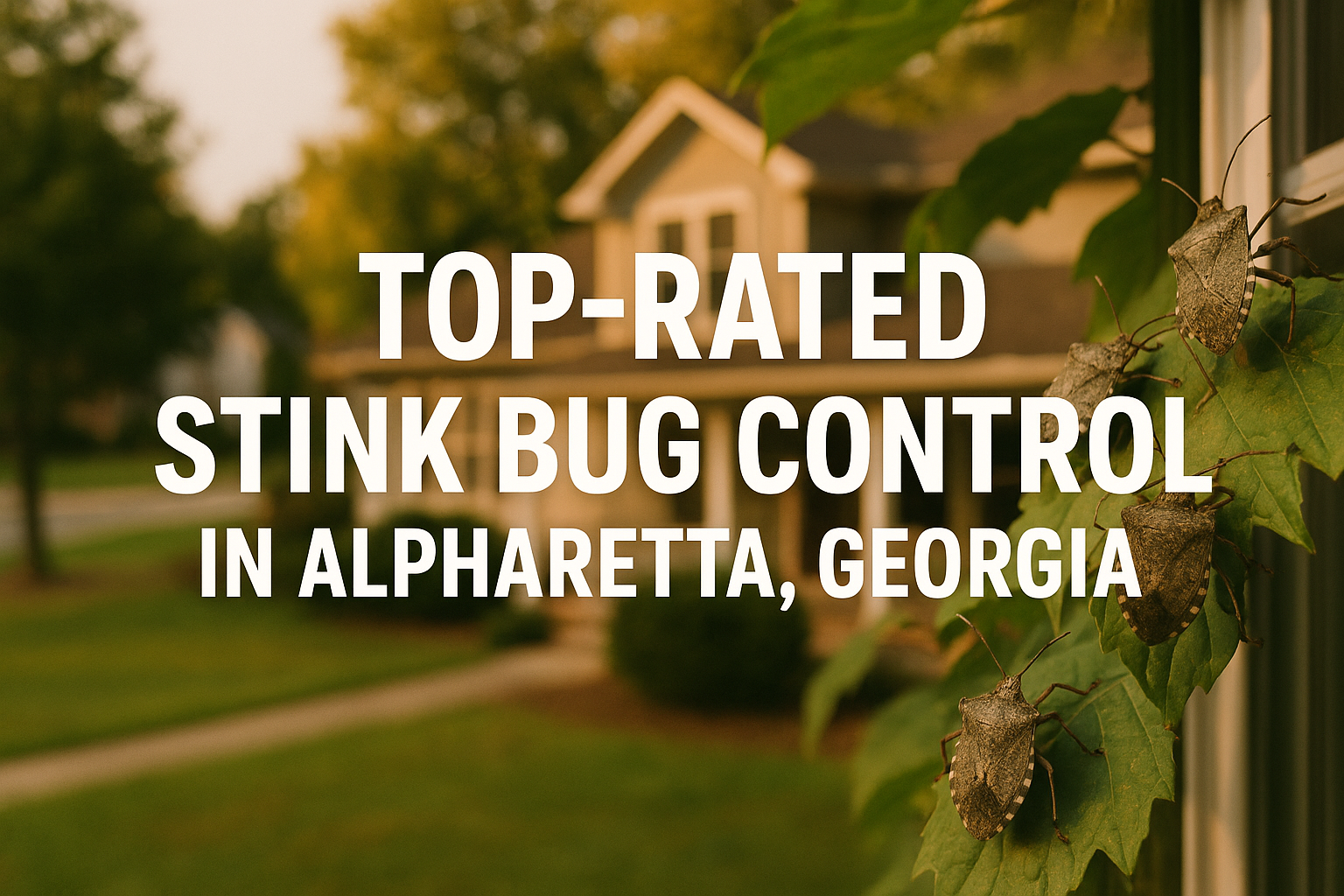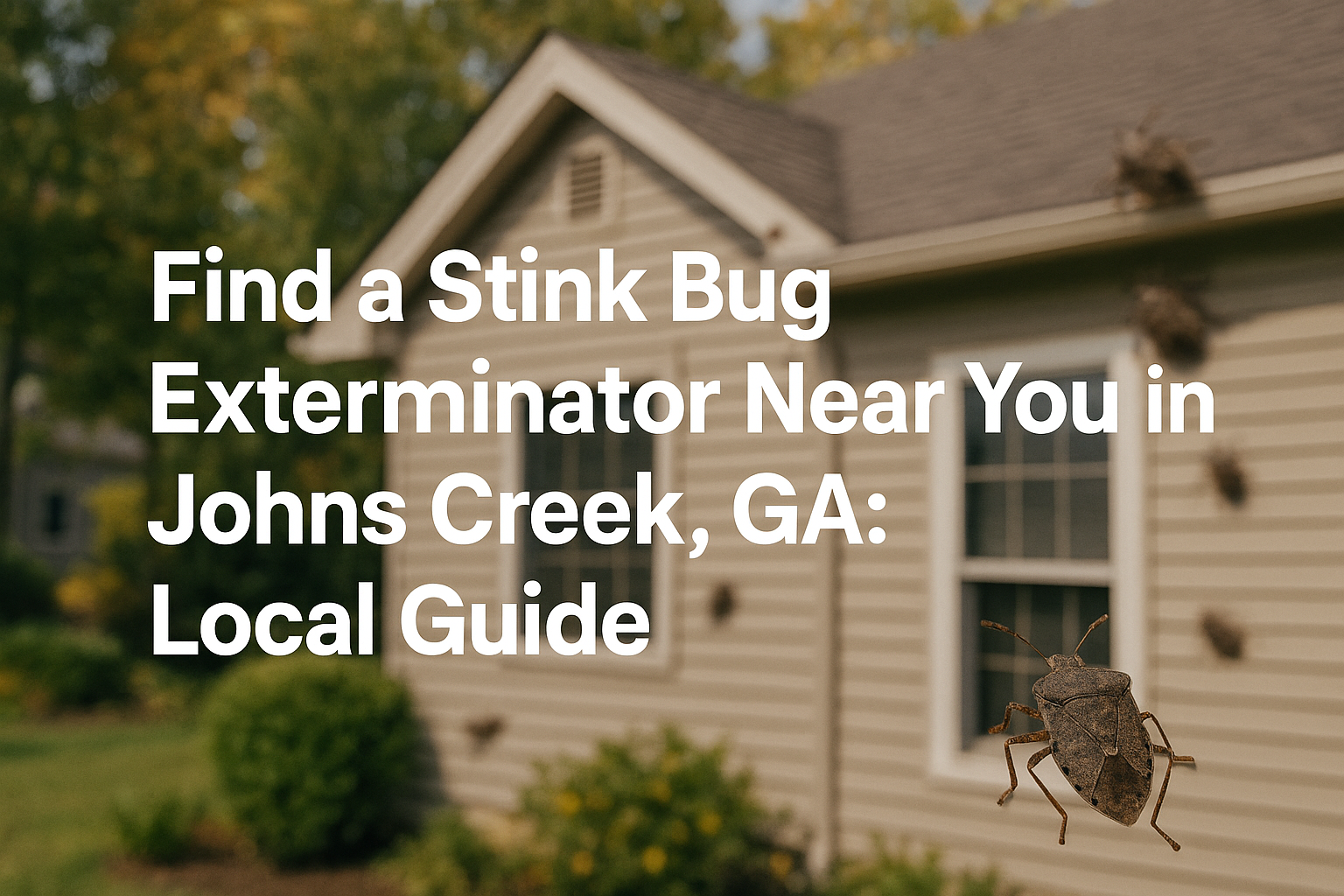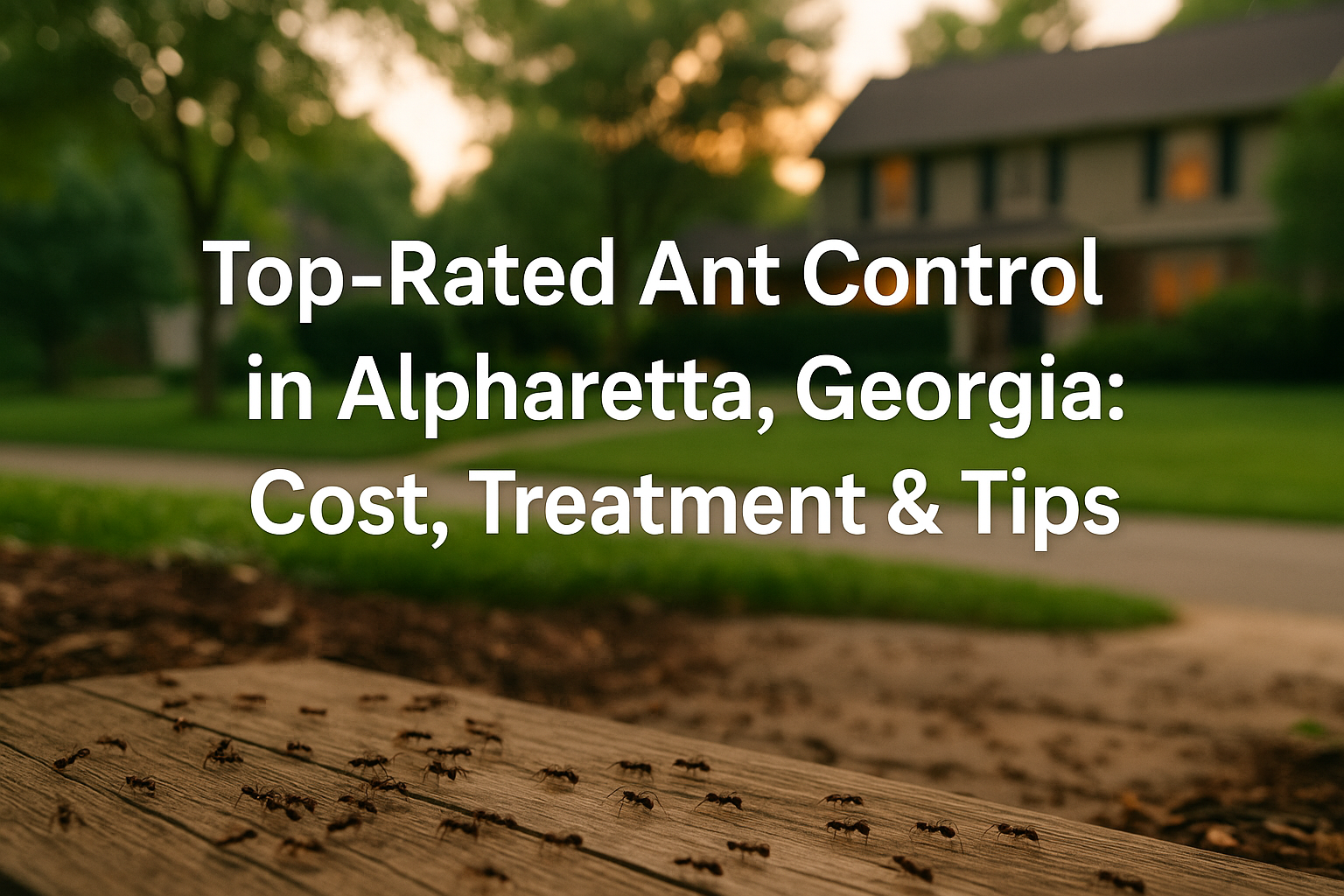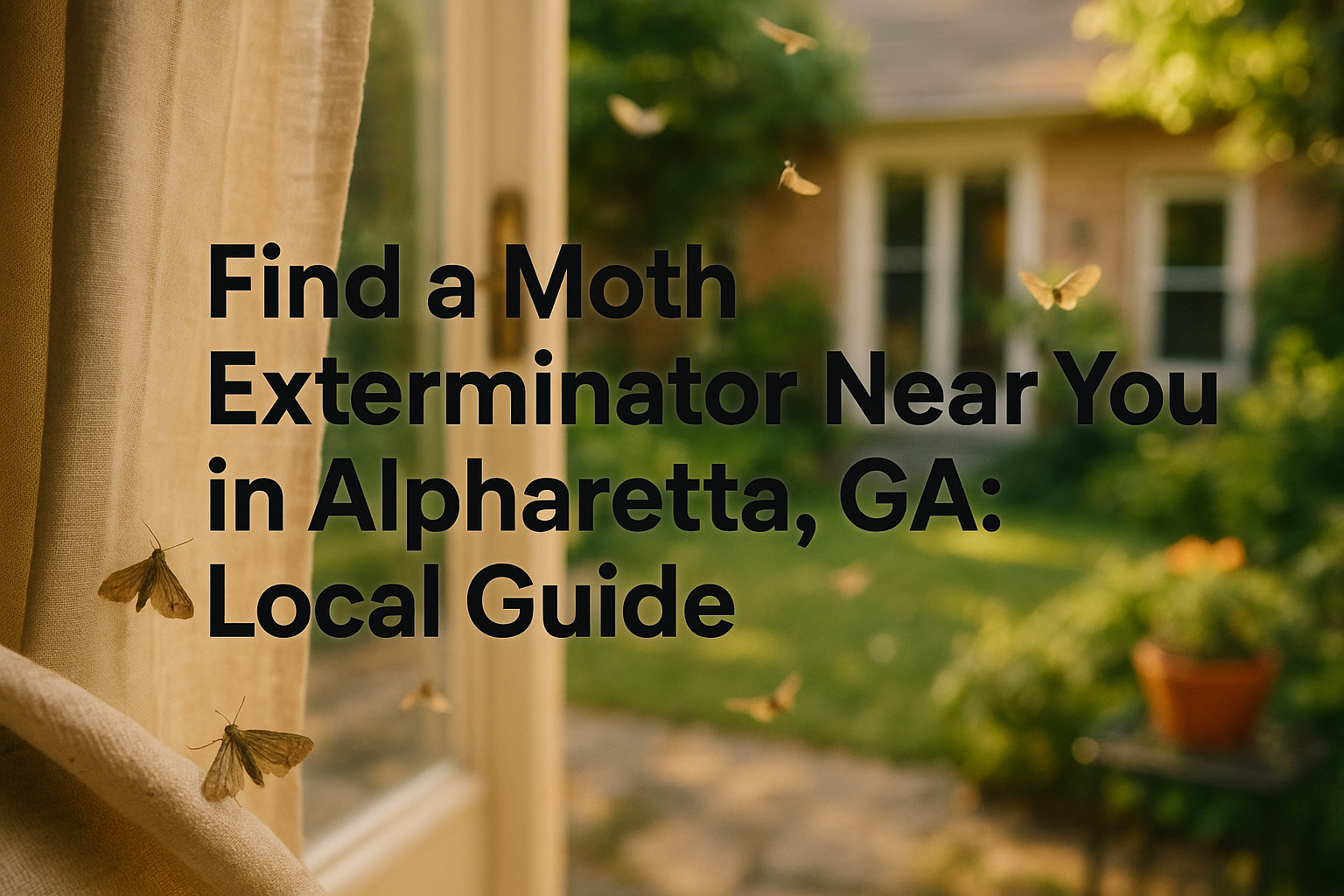Why Centipedes Are a Problem in Johns Creek Homes
If you’ve ever turned on the basement light late at night and spotted something fast and many-legged dart across the floor, you’re not alone. Centipedes are all too common in Johns Creek, Georgia, and in our neighborhood, they love to take advantage of the area’s high humidity, especially during rainy seasons. That’s why centipede control Johns Creek has become an essential service for many homeowners. Older homes with basements and crawlspaces are a particular favorite, since these moist, cool spots are perfect for centipedes to set up shop.
What makes centipedes such an issue isn’t just their creepy-crawly looks or the jump scare they give you – their presence usually means two things: extra moisture in your home and a food supply of smaller insects. Basically, if you’ve got centipedes, you likely have other bugs hanging around (their favorite snacks), and you might have a hidden moisture or drainage problem that could spell trouble down the road.
No one likes to find centipedes lurking around their shoes, storage bins, or even in the bathroom. Most species you’ll find around Johns Creek aren’t dangerous, but some can deliver a mild bite that’s a real nuisance for kids and pets. Plus, these pests multiply fast if conditions are right, so it doesn’t take long before a couple turns into a real infestation, especially if your home is slow to dry out after heavy rains.
Dealing with centipedes sooner rather than later is key—not just to keep your living spaces comfortable, but to get ahead of any other pest or moisture issues. Centipede control in Johns Creek typically costs between $50 and $200 per visit, depending on the size of your home and the severity of the infestation. If you’re considering ongoing protection, many homeowners opt for quarterly pest control plans, which are usually in the ballpark of $35–$50 a month—a small price to pay for peace of mind and a bug-free home.
Whether you just spotted your first centipede or you’re already tired of chasing them with a shoe, it pays to learn about your options. In the sections below, you’ll find a local breakdown of treatment strategies, what you can expect to pay, and how to keep centipedes from returning. Let’s help you take back your home from these speedy, unwelcome guests!
What Makes Centipede Control Johns Creek Cost More or Less?
Curious why the price tag for centipede control Johns Creek services isn’t set in stone? Here’s what’s really going on with those quotes you’ll get around Johns Creek. First up, the size of your place matters a lot. Covering a small condo is one thing, but if you’ve got a big home, tons of nooks, an unfinished basement, or even a crawlspace, the technician needs to use more product and spend more time sealing up gaps. That all adds to the final bill.
Then, there’s how bad the centipede problem is. If you only notice the occasional leggy visitor, you might just need a quick touch-up. But when these critters keep popping up—or you spot them in multiple rooms—expect the cost to go up. Heavier infestations usually mean either more potent treatments, or coming back for a few rounds to finish the job.
Your choice in service also affects what you’ll pay. Some folks just want a one-and-done visit, others sign up for ongoing pest control, which often includes centipedes along with other unwelcome guests. Bundled plans can save some cash month-to-month while keeping those pests out for good.
The method and tools used for centipede control Johns Creek services change things, too. Chemical barriers, sealing up entry points, and dealing with moisture all involve different materials and labor. Sometimes homes in historic neighborhoods like Medlock Bridge or Newtown need even more work—older construction means more tiny crevices where centipedes wiggle in, so the team will need extra time and supplies.
To give you an idea, a single, focused centipede control Johns Creek service could run you somewhere between $50 and $200, depending on the factors above. If you prefer to be hands-off and want ongoing coverage, monthly plans with centipede control tucked in often land between $35 and $50 a month.
The most important thing? Be open with your pest pro—show them the trouble spots and ask about different options for centipede control Johns Creek services. That’ll help you get the clearest quote and the right protection for your home.
What Makes Centipede Control Johns Creek Services Cost More or Less?
Curious why the price tag for centipede control Johns Creek services isn’t set in stone? Here’s what’s really going on with those quotes you’ll get around the area. First up, the size of your place matters a lot. Covering a small condo is one thing, but if you’ve got a big home, tons of nooks, an unfinished basement, or even a crawlspace, the technician needs to use more product and spend more time sealing up gaps. That all adds to the final bill.
Then, there’s how bad the centipede problem is. If you only notice the occasional leggy visitor, you might just need a quick touch-up. But when these critters keep popping up—or you spot them in multiple rooms—expect the cost to go up. Heavier infestations usually mean either more potent treatments, or coming back for a few rounds to finish the job.
Your choice in service also affects what you’ll pay. Some folks just want a one-and-done visit, others sign up for ongoing pest control, which often includes centipedes along with other unwelcome guests. Bundled plans can save some cash month-to-month while keeping those pests out for good.
The method and tools used change things, too. Chemical barriers, sealing up entry points, and dealing with moisture all involve different materials and labor. Sometimes homes in historic neighborhoods like Medlock Bridge or Newtown need even more work—older construction means more tiny crevices where centipedes wiggle in, so the team will need extra time and supplies.
To give you an idea, a single, focused centipede control Johns Creek service could run you somewhere between $50 and $200, depending on the factors above. If you prefer to be hands-off and want ongoing coverage, monthly plans with centipede control Johns Creek solutions tucked in often land between $35 and $50 a month.
The most important thing? Be open with your pest pro—show them the trouble spots and ask about different options. That’ll help you get the clearest quote and the right protection for your home.
Why Johns Creek Homes See More Centipede Trouble—And What It Means for Treatment
If you live in Johns Creek, you’ve probably wondered why those speedy, leggy centipedes pop up in your basement or bathroom—sometimes no matter how much you clean. Truth is, our local climate and even the quirks of your house are a big part of the story.
Let’s start with the weather. Johns Creek’s humid summers, muggy springs, and those drenching rainstorms create perfect living conditions for centipedes. All that moisture seeps into basements or crawlspaces, especially in neighborhoods like River Farm or over near Jones Bridge, where homes have a bit of age and the original weatherproofing isn’t quite modern. Cracks in your foundation, gaps around pipes, and even just clutter in storage spaces give centipedes cozy places to hide and lay low during the day.
Landscaping plays a role, too. If your yard slopes down toward your foundation, rainwater can collect along your exterior walls, making those hidden cracks all the more inviting. Houses built with certain materials, or those that haven’t been updated with solid vapor barriers, tend to have even more trouble keeping things dry and centipede-free. And let’s not forget the little things—openings around electrical or plumbing penetrations, leaf piles hugging the house, or boxes stored tight to the wall inside—all these boost your risk.
The flip side of this is that treating for centipedes here isn’t one-size-fits-all. Older homes with more entry points and moisture spots often need a customized approach, blending perimeter treatments with moisture control and targeted sealing. And the season matters, too: prices might creep up during our wet springs and falls, when centipedde sightings shoot up and most folks want service at once.
Awareness is everything. If you know how our Johns Creek climate and your home’s structure work together, you can partner with your pest professional to go after the real sources of the problem—not just the bugs you see. Next up, take a look at our infographic breaking down exactly how Johns Creek conditions shape centipede control strategies and pricing.
Keeping Centipedes Out Without Breaking the Bank
Let’s be real: nobody wants a parade of centipedes crashing the party in their basement or bathroom. With a handful of everyday actions, you can send those unwanted guests packing—and avoid paying for extra pest control calls down the road.
- Dry It Out: Centipedes love damp spots. Fix leaky pipes and running toilets. Run a dehumidifier in basements and crawlspaces, and make sure your bathroom fan actually gets rid of steam. The drier your home, the less welcome centipedes feel.
- Seal Their Sneaky Entrances: Grab some caulk or weather stripping and seal up gaps around windows, doors, and anywhere pipes or wires come through your walls. Even the smallest crack is a welcome mat for pests.
- Clear the Clutter: Piles of cardboard, old newspapers, and that random stuff stashed in the garage—or under the stairs—are prime centipede hideouts. Give storage areas a regular purge and swap cardboard boxes for plastic bins if you can.
- Landscaping Tweaks: If water pools around your foundation after it rains, you’re basically setting up a buffet for centipedes. Slope soil away from your house, and keep shrubs and mulch at least a foot away from exterior walls to keep things dry.
- Stay Ahead with Regular Inspections: After big rains or changes in season, check around baseboards, crawlspaces, and damp corners. Spotting signs of centipedes early can save you from big headaches (and expenses) later.
EPA and NPMA call these integrated pest management steps for a reason—they work. You’ll not only keep centipedes away, but you’ll make your whole home less appealing to most pests. Stick to this routine, and you may find you need fewer professional treatments (which means less strain on your wallet). Up next, we’ve got a handy seasonal checklist to show you exactly when to do what. Stay tuned!
Why Timing Your Centipede Control Johns Creek Makes All the Difference
If you’ve ever stomped a centipede in your kitchen or watched one dash across the basement wall, you know these critters seem to show up out of nowhere—especially around Johns Creek. What a lot of folks don’t realize is, there’s a real pattern to when centipedes invade our homes, and if you play it smart with your centipede control Johns Creek strategy, you can get a leg up on them (pun intended!).
Most locals from neighborhoods like Seven Oaks and Doublegate notice a big uptick in centipede sightings in spring and fall. That’s not a coincidence. Those in-between seasons come with more rain and humidity, so bugs—centipedes’ favorite food—get driven indoors. With their prey moving in, centipedes follow right behind.
So, when should you act? The answer: before things get crazy. Early spring and late summer are prime times for stopping centipedes before they multiply. Laying down treatments or calling a pro just as the moisture and bugs pick up means you’re getting ahead of a wave instead of trying to fight it off later.
For the best results, many Johns Creek homeowners schedule quarterly pest control visits. This regular rhythm helps keep centipede numbers low all year, rather than chasing after an infestation once it’s already started. Prevention’s a whole lot easier (and less stressful) than a mid-season bug emergency.
- DIY tip: Seal up cracks and dehumidify crawlspaces before the big spring and fall surges.
- Pro tip: Book that first appointment when the weather’s starting to warm or cool, not after you’re seeing centipedes every day.
Adjusting your schedule based on Johns Creek’s seasons really does pay off. You might even want to check out our visual guide for a month-by-month look at when it’s smartest to act. That way, your home stays miles ahead—no centipede welcome mats needed.
Ready to Kick Centipedes Out for Good?
If centipedes are making themselves a little too comfortable in your Johns Creek home, it’s time to call the pros you can trust. At Anthem Pest Control, we’ve got your back with honest advice, reliable treatments, and fair pricing that fits your needs—no surprises. We know how uncomfortable it is to discover unwanted creepy-crawlies, and we’re here to make your home feel safe and pest-free again.
Don’t wait—book your FREE, no-obligation property assessment now. Give us a call at 877-3718-5196 or check us out online. Let’s show you how affordable and effective professional centipede control can be. We promise clear answers, great service, and a home you’ll feel good about again.
Centipede Control Johns Creek: Answers to Your Top Questions
Let’s clear up the most common worries about centipedes in your Johns Creek home. These little creatures might look freaky darting across the floor, but are they really something to worry about?
- Are centipedes dangerous to my family or pets?
Not really. The typical house centipede you’ll find in our area is mostly harmless. Larger ones can give a mild bite if you try to handle them (think: a bee sting), but serious reactions are very rare. Better to just leave them alone or let a pro handle removal. - What actually brings centipedes into my Johns Creek home?
A few main things: moisture, clutter, and plenty of other bugs to snack on. If you have damp spots (like basements, crawlspaces, or leaky pipes), messy storage areas, or a thriving bug buffet, you’re basically putting out a Welcome sign for centipedes. - How much does good centipede control cost around here?
A one-time treatment usually runs between $50 and $200, depending on how bad the problem is and how big your house is. Want to make sure these pests stay away? Quarterly protection plans usually range from $35 to $50 a month, and they cover regular checkups and treatments. - Will one treatment do the trick, or do I need more?
One-off treatments can knock out a sudden centipede invasion. But for lasting peace of mind, most pros (including us) recommend staying on top of things with regular quarterly visits. That way, you’re not just chasing problems—you’re preventing them. - Are certain neighborhoods in Johns Creek more likely to have issues?
You bet. Older areas like Medlock Bridge, River Farm, and Newtown, especially homes with unfinished basements or crawlspaces, tend to see centipede problems more often. More moisture and older construction can make homes in these spots more appealing to pests. - What simple steps can I take to avoid centipede problems?
Keep your home dry by running dehumidifiers and fixing leaks. Declutter those storage spots. Seal up cracks and gaps along your foundation and doors. And if you want real peace of mind, have a pest expert give your place a once-over every few months.
Got more questions about keeping centipedes or other pests out for good? Check out Anthem Pest Control’s local guide or chat with an expert for tips on comprehensive pest plans. We’re here to help make Johns Creek homes pest-free—one crawlspace at a time.

